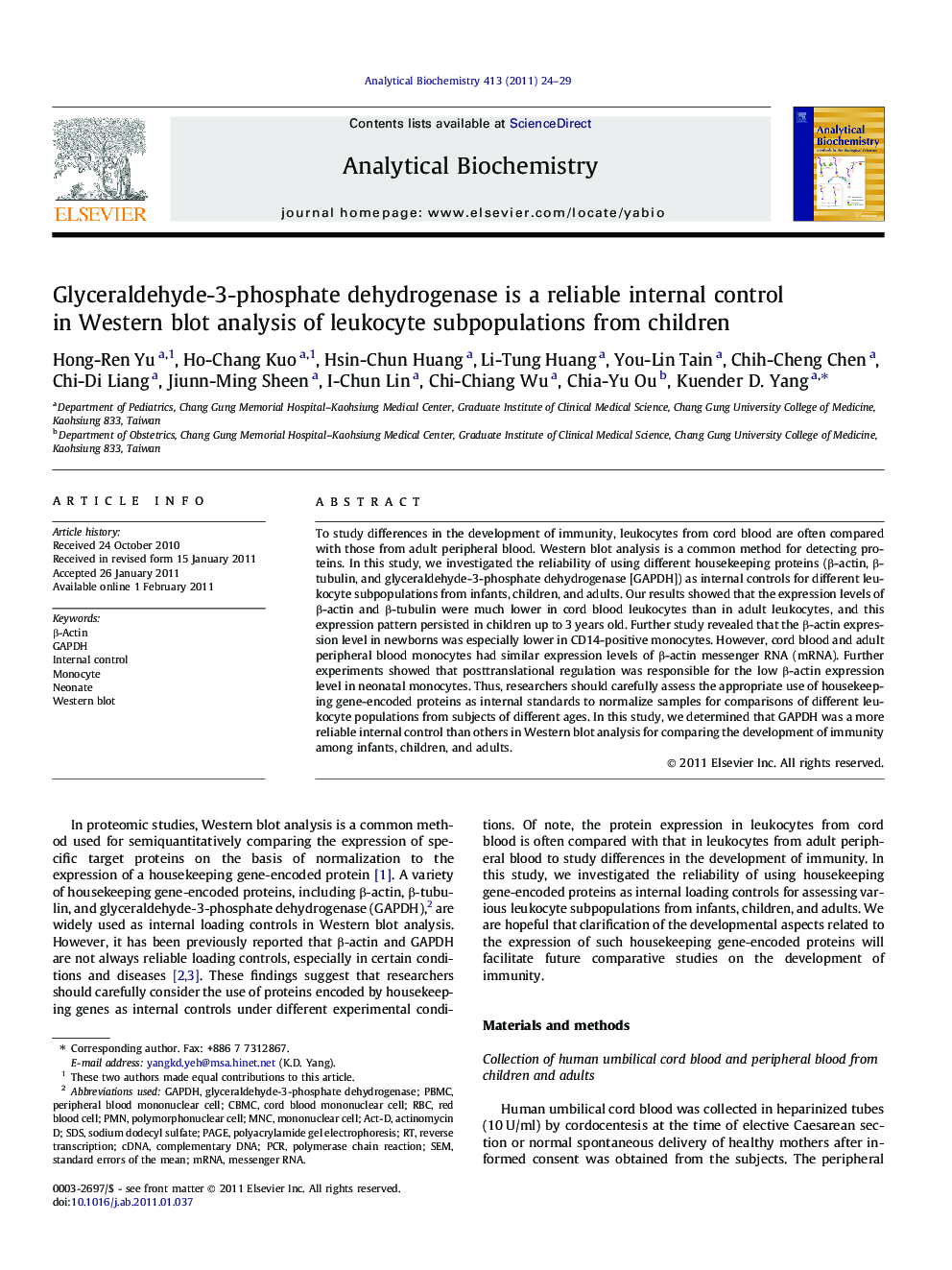| Article ID | Journal | Published Year | Pages | File Type |
|---|---|---|---|---|
| 1176947 | Analytical Biochemistry | 2011 | 6 Pages |
To study differences in the development of immunity, leukocytes from cord blood are often compared with those from adult peripheral blood. Western blot analysis is a common method for detecting proteins. In this study, we investigated the reliability of using different housekeeping proteins (β-actin, β-tubulin, and glyceraldehyde-3-phosphate dehydrogenase [GAPDH]) as internal controls for different leukocyte subpopulations from infants, children, and adults. Our results showed that the expression levels of β-actin and β-tubulin were much lower in cord blood leukocytes than in adult leukocytes, and this expression pattern persisted in children up to 3 years old. Further study revealed that the β-actin expression level in newborns was especially lower in CD14-positive monocytes. However, cord blood and adult peripheral blood monocytes had similar expression levels of β-actin messenger RNA (mRNA). Further experiments showed that posttranslational regulation was responsible for the low β-actin expression level in neonatal monocytes. Thus, researchers should carefully assess the appropriate use of housekeeping gene-encoded proteins as internal standards to normalize samples for comparisons of different leukocyte populations from subjects of different ages. In this study, we determined that GAPDH was a more reliable internal control than others in Western blot analysis for comparing the development of immunity among infants, children, and adults.
